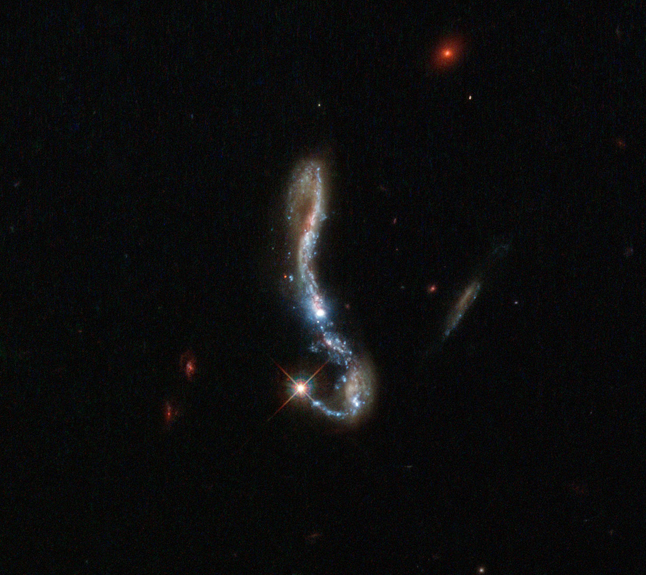Earlier this month, NASA's Hubble Space Telescope captured an image of a small, glistening hook in the dark sky, an incredible object known as J082354.96+280621.6, or J082354.96 for short. This unusual high rate of accumulating stars is known as a starburst galaxy.

Starburst galaxy J082354.96. Credit: ESA/Hubble and NASA.
The rate of star formation in a starburst galaxy is so excessive that the galaxy consumes all of its gas accumulation, which the stars form from, on a timescale much shorter than the existence of the galaxy itself. Since it only occupies a brief period of a galaxy's evolution, the starburst nature of a galaxy is just a phase.
Astronomers probe the nature and structure of these dazzling galaxies by observing the behavior of their dust and gas components, particularly the Lyman-alpha emission, which occurs when electrons within a hydrogen atom fall from a higher energy level to a lower one. Because they emit light as they do so, this fascinating, sparkling scene is the outcome. What makes the emission interesting is that this light leaves its host galaxy only after extensive scattering in gas nearby, which means that this light can be used as a direct probe of what a galaxy is made up of.
In very distant galaxies, the study of this Lyman-alpha emission is common. Currently, a study named LARS (Lyman Alpha Reference Sample) is investigating the same effect in nearby galaxies. Fourteen galaxies were chosen by astronomers, including the one pictured above, to study what happens within them, using spectroscopy and imaging. Astronomers found that these Lyman-alpha photons are able to travel a greater distance if a galaxy has less dust, meaning they can use this emission to infer how dusty the source galaxy is.
Story via nasa.gov.
Advertisement
Learn more about Electronic Products Magazine





